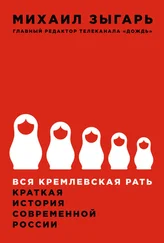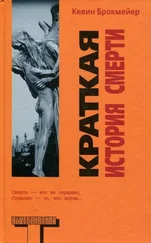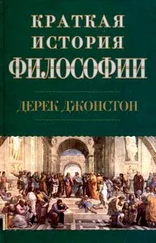Thomas . Religion and the Decline of Magic, pp. 646–648.
Возможно, тут имеется в виду также убеждение в согласованности и целостности сверхъестественного.
Ibid., p. 37.
Ibid., ch. 1. The magic of the medieval church; D. Gentilcore . From Bishop to Witch: The System of the Sacred in Early Modern Terra d’Otranto. Manchester: Manchester University Press, 1992; M. Rubin . Corpus Christi: The Eucharist in Late Medieval Culture. Cambridge: Cambridge University Press, 1991.
C. Rider . Magic and Religion in Medieval England. London, Reaktion Books, distributed by University of Chicago Press, 2012, p. 39.
Бурхард (ок. 965–1025) – епископ Вормса с 1000 г., автор сочинений по каноническому праву.
E. Cameron . Enchanted Europe: Superstition, Reason and Religion 1350–1750. Oxford: Oxford University Press, 2010, p. 42.
Rider . Magic and Religion, p. 70.
Жан Жерсон (наст. имя Жан Ле Шарлье, 1363–1429) – французский богослов и проповедник, мистик и гуманист, сторонник преодоления церковной схизмы начала XV в. и активный участник Констанцского собора 1414–1418 гг.
Cameron . Enchanted Europe, p. 62.
Rider . Magic and Religion, p. 8.
Английское слово magic означает одновременно волшебство, колдовство, ворожбу, ведовство, чародейство, магию, которые в русском языке обладают разными смысловыми оттенками. Хотя магия может считаться более или менее нейтральным термином, в последние годы слово «магия» чаще используется в положительном смысле, между тем как колдовство, ворожба и ведовство имеют отрицательную окраску. Волшебство тяготеет к положительному полюсу, а чародейство – к загадочной, не очень понятной силе. Перевод английского слова magic сильно зависит от контекста.
Cameron . Enchanted Europe, p. 42.
Thomas . Religion and the Decline of Magic, p. 643.
A. Walsham . The Reformation of the Landscape: Religion, Identity and Memory in Early Modern Britain and Ireland. Oxford: Oxford University Press, 2011.
Cameron . Enchanted Europe, p. 143.
F. L. K. Hsu . Exorcising the Trouble Makers: Magic, Science and Culture. Westport, CT: Greenwood Press, 1983; R. Merrifield . The Archaeology of Ritual and Magic. London: Batsford, 1987; A. Murray . Missionaries and Magic in Dark-Age Europe // Past and Present 136 (1992): 186–205; J. Neusner, E. Frerichs , and P. V. McCracken Flesher (eds.). Religion, Science, and Magic: In Concert and In Conflict. Oxford: Oxford University Press, 1989; J. Van Engen . The Christian Middle Ages as an Historiographical Problem // American Historical Review 91 (1986): 519–552.
R. van Dülmen . The Reformation and the modern age // C. S. Dixon (ed.). The German Reformation: The Essential Readings. Oxford: Oxford University Press, 1999, pp. 196–221; T. Nipperdey . The Reformation and the modern world // E. I. Kouri and T. Scott (eds.). Politics and Society in Reformation Europe: Essays for Sir Geoffrey Elton on his Sixty-fifth Birthday. Basingstoke: Macmillan, 1987, pp. 535–545; P. Spierenburg . The Broken Spell: A Cultural and Anthropological History of Preindustrial Europe. Basingstoke: Macmillan, 1991.
Суеверия – разновидность, форма невежества, то есть незнания, заключающаяся в вере в сверхъестественное.
Cameron . Enchanted Europe.
Ibid.; H. Parish and W. G. Naphy . Religion and Superstition in Reformation Europe. Manchester: Manchester University Press, 2002.
R. Scribner . Reformation and Desacralisation: From Sacramental World to Moralised Universe // R. Po-Chia Hsia and R. Scribner (eds.). Problems in the Historical Anthropology on Early Modern Europe. Wiesbaden: Harrassowitz, 1997, p. 78; R. Scribner . The impact of the Reformation on Daily Life // Mench and Objekt im Mittelalter und in der Fruhen Neuzeit. Leben-Alltag-Kultur. Vienna: Verlag der Österreichischen Akademie der Wissenschaften, 1990, pp. 316–443; Walsham . The Reformation and the Disenchantment of the World Reassessed, pp. 497–528.
Cameron . Enchanted Europe, p. 219.
Ibid., pp. 228–231.
L. Daston . Marvelous Facts and Miraculous Evidence in Early Modern Europe // Critical Inquiry 18 (1991): 93–124; A. Walsham . Miracles in post-reformation England // K. Cooper and J. Gregory (eds.). Signs, Wonders, Miracles: Representations of Divine Power in the Life of the Church. Woodbridge: Boydell, 2005, pp. 273–306; S. Clark . The rational witchfinder: conscience, demonological naturalism and popular superstition // S. Pumfrey and P. Rossi (eds.). Science, Culture and Popular Belief in Renaissance Europe. Manchester: Manchester University Press, 1992, pp. 222–248; S. Clark . Vanities of the Eye: Vision in Early Modern European Culture. Oxford: Oxford University Press, 2007; D. P. Walker . The Cessation of Miracles // I. Merkel and A. Debus, Hermeticism and the Renaissance. Washington, DC: Folger Shakespeare Library, 1988, pp. 111–124.
O. P. Grell (ed.). Paracelsus: The Man and his Reputation, his Ideas and their Transformation. Leiden: Brill, 1998, p. 45.
C. S. Dixon . Contesting the Reformation. Oxford: Blackwell, 2012, p. 194 (notes 131, 132, 133).
C. M. N. Eire . Reformations: The Early Modern World. New Haven, CT: Yale University Press, 2016, p. 747ff.
J. Delumeau . Catholicism between Luther and Voltaire: A New View of the Counter-Reformation. London: Burns and Oates, 1977.
Eire . Reformations, pp. 707–716.
Австралийский историк написал несколько фундаментальных работ о Реформации: Robert W. Scribner . For the sake of simple folk: Popular propaganda for the German Reformation (Cambridge studies in oral and literate culture. Bd. 2). Cambridge: Cambridge University Press, 1981; Idem . The German Reformation. London: Macmillan, 1986; Idem . Popular culture and popular movements in Reformation Germany, London; Ronceverte, WV: Hambledon Press, 1988; Idem . The Reformation in national context. Cambridge: Cambridge University Press, 1998.
Читать дальше
![Хелен Пэриш Краткая история: Реформация [litres] обложка книги](/books/389963/helen-perish-kratkaya-istoriya-reformaciya-litres-cover.webp)
![Юваль Ной Харари - Sapiens. Краткая история человечества [litres]](/books/34310/yuval-noj-harari-sapiens-kratkaya-istoriya-cheloveche-thumb.webp)




![Джон Херст - Краткая история Европы [litres]](/books/389962/dzhon-herst-kratkaya-istoriya-evropy-litres-thumb.webp)
![Пол Стретерн - Расцвет и падение [Краткая история 10 великих империй] [litres]](/books/390297/pol-stretern-rascvet-i-padenie-kratkaya-istoriya-10-thumb.webp)
![Джон Норвич - Краткая история Франции [litres]](/books/400778/dzhon-norvich-kratkaya-istoriya-francii-litres-thumb.webp)
![Уильям Байнум - Краткая история науки [litres]](/books/412489/uilyam-bajnum-kratkaya-istoriya-nauki-litres-thumb.webp)
![Стивен Хокинг - Краткая история времени. От Большого взрыва до черных дыр [litres]](/books/416997/stiven-hoking-kratkaya-istoriya-vremeni-ot-bolshogo-thumb.webp)
![Мартин Буркхардт - Краткая история цифровизации [litres]](/books/435614/martin-burkhardt-kratkaya-istoriya-cifrovizacii-lit-thumb.webp)
